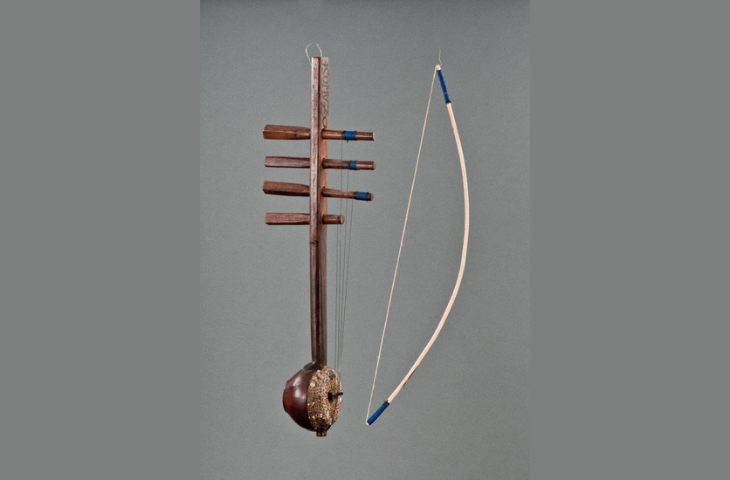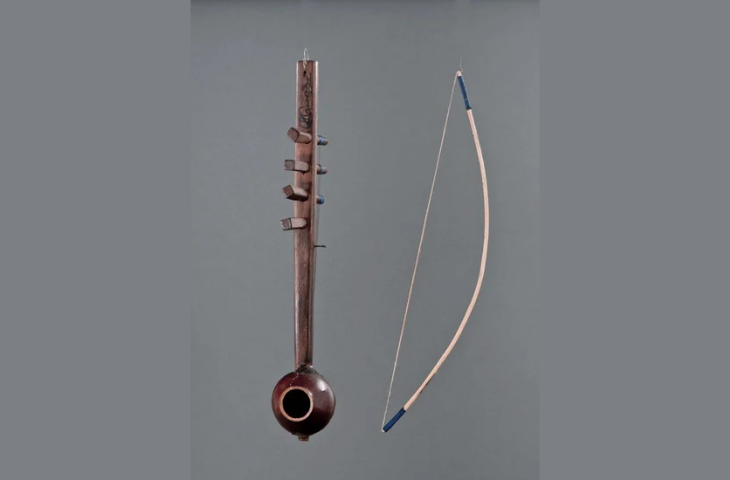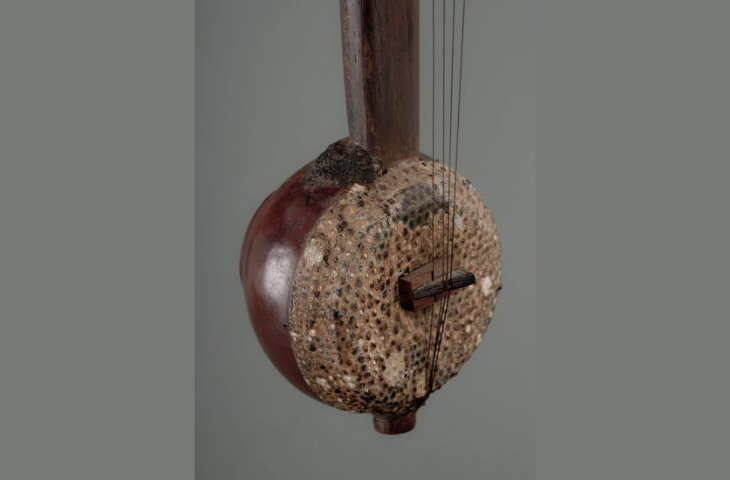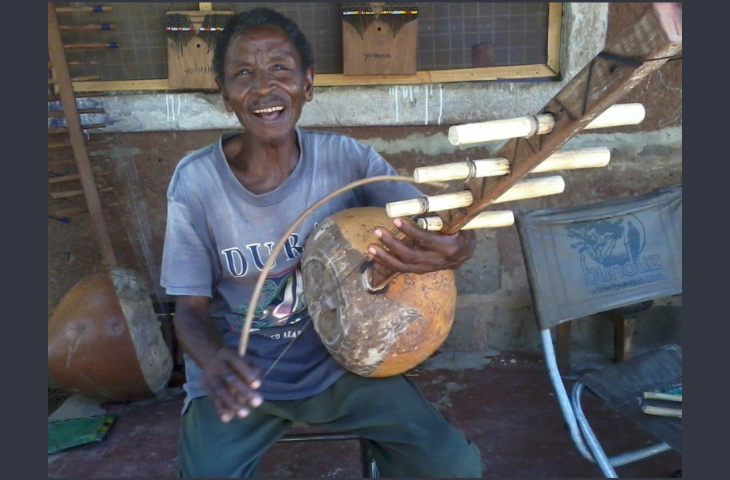January 2024
Fig.1

Izeze, O.H. Zawose, Tanzania, 2010, inv. 2014.273.001
Fig.2

Izeze, O.H. Zawose, Tanzania, 2010, inv. 2014.273.001
Fig.3

Izeze, O.H. Zawose, Tanzania, 2010, inv. 2014.273.001
Fig.4

Oskar Hukwe Zawose, 2010
The izeze: construction and playing techniques of the Wagogo spike lute
The izeze (fig.1 to 3) is a spike lute of the Wagogo people, an agricultural Bantu group who live in the Dodoma area in Central Tanzania. An izeze may be bowed and/or plucked. Mazeze (plural of izeze) come in various sizes - ranging from 60 to 164 (!) cm long - and with different numbers of strings, from one to fourteen. Mazeze with one to four strings are generally bowed, and are therefore fiddles, while instruments with six or more strings may still be bowed, but more often are simultaneously bowed and plucked, or only plucked.
The resonator of an izeze is made of a calabash, covered with either goat or reptile skin. The back of the resonator is open, functioning as a soundhole. The long wooden neck is inserted through the calabash, terminating in a spike at the base. The tuning pegs are inserted dorsally into the top end of the neck, the strings running over a wooden bridge to the spike at the base.
The izeze fiddle is bowed with a convex bow made of wood and baobab fibre, and may be played on various occasions: during initiation rituals and other pivotal life events, during harvest celebrations, or for recreational purposes. An izeze can be played solo, as an accompaniment to singing or as part of a larger ensemble. When the instrument has more than two strings, at least one of them functions as an open string, while the others are melody strings fingered with the left hand.
The four-string bowed izeze by Oscar Hukwe Zawose and the Zawose musical dynasty
The instrument put in the spotlight is a four-string bowed izeze. It was created in 2010 by Oscar Hukwe Zawose (fig.4), son of the legendary Hukwe Ubi Zawose. The Zawose family, a multigenerational clan of master musicians, are very well-known in Tanzania and abroad. When Carolien Hulshof and Saskia Willaert were visiting their compound in Bagamoyo, they were given a demonstration of several different instruments, and the reason for the Zawose fame became clear: no matter the casual ad hoc performance, their voices and instruments melted together in resounding harmony, creating a transporting soundscape.
Characteristic Gogo harmonies and musical style
The characteristic Gogo harmony is based on a tetratonic system (four notes in a scale), consisting of natural harmonics over a single fundamental, namely the 4th to the 8th partial. For example, with a fundamental C: C E G B-flat. Chords are created by combining two notes from the scale, skipping the note in between them, leading to a descending harmonic cycle of a perfect fourth (G C), a diminished fifth (E B-flat) and a perfect fifth (C G). In principle Gogo music is homophonic multi-part music, with an occasional independent vocal or izeze melody line placed on top. This can be heard in the video below, where our instrument of the month is played by Ndahani Zawose, accompanied by another izeze, an ilimba (a type of sanza or "thumb piano") and a musical bow.
Text: Carolien Hulshof